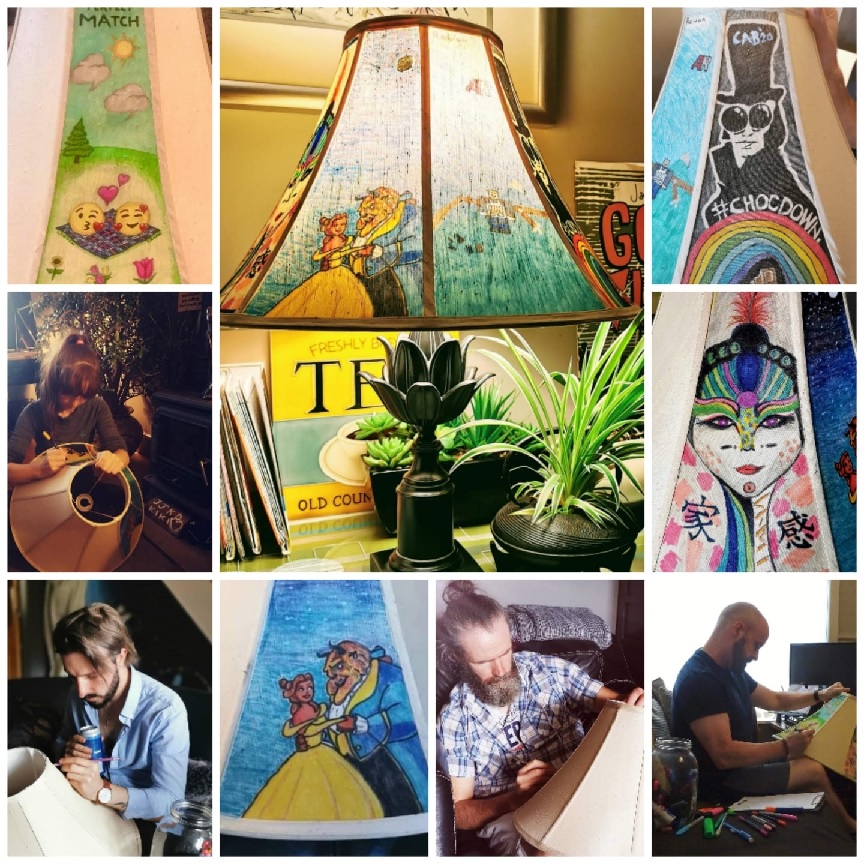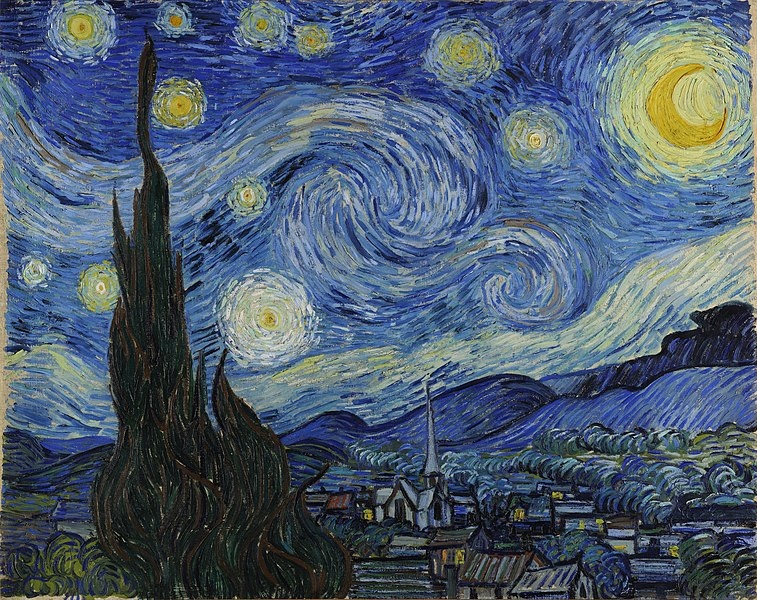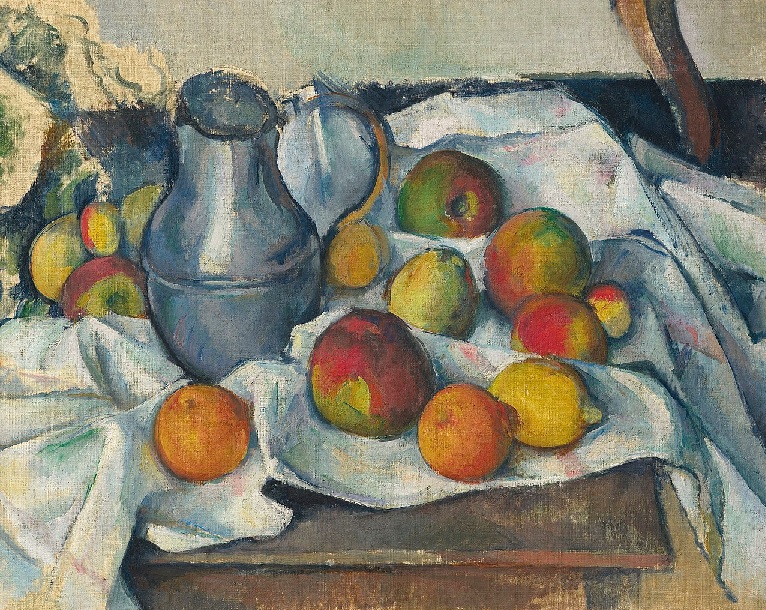
DT discovers that lockdown art might be all the rage in 2020/21, yet it’s nothing new….
We’re currently living and working under the restrictions imposed by the third national lockdown, as the world continues to battle a global pandemic. The ramifications of COVID-19 also means society has to go into even more insular means of hibernation this winter. If and/or when we test positive for the disease. Or indeed, if we’ve been in the close company of someone else who has recently received a positive diagnosis.
Self-isolation can have strange effects on folk. It can drive some to re-evaluating their very existance and role on the planet. It can force others to reach for comforting elements. Often masquerading as confectionary and alcoholic temptation.
Yet we weren’t the first generation to choose to go off the radar during challenging times in our lives. Be they sanctioned upon us through elected governance, or simply chosen as an act of independance for reasons personal to the individual doing the self-isolating. Neither did we invent lockdown art, as such.
Indeed, some people choose to isolate themselves from society. While others have it thrust upon them (please see 2020/21 pandemics for more info). Some of those – the former demographic – happen to be rather good at drawing, painting and related stuff. On occasion they also enjoy being slightly eccentric and refer to themselves as ‘hermits’ on their CV.
In Splendid Isolation
On this self-isolation note, DT has trawled the internet to discover that some very famous works of art actually originated while the protagonist were under their own form of lockdown. Largely self-imposed, to be honest. As artists of yore did tend to pursue some pretty bohemian lifestyles as they sought inspiration for compositions which they hoped would define their career.
Yes. Long before Coronavirus ushered in a period of lockdown and self-isolation found its way into the Oxford English (along with a raft of other new everyday phrases, including social distancing, furlough, Covid-safe, herd immunity, etc), many famous artists were holed up in their homes.
Mixing with nobody. Cutting themselves off from society. And generally hunkered down for the foreseeable.
Also like us, said famous arty types were filling their groundhog days (more self-imposed than ours for the most part, it has to be said) by indulging their passion for creative endeavours.
Not least because their LinkedIn profiles acknowledged them as employees in the creative industries prior to lockdown. So, hadn’t just reached for the paintbrush and easels. As a desperate means to distract us from the darker facts and figures being broadcast over the past 12 months.
A Renaissance of Lockdown Art in a Lampshade
The nation turned to the likes of Grayson Perry and Noel Fielding to inspire us to get all arty for the sake of our spirituality and mindfulness. Although the majority of the household name artists cited beneath had a history of committing oils to canvas. And weren’t previously bored civil servants keeping their heads down in Surrey as their employer paid 80% of their wages. Etc.
Suitably inspired by Grayson Perry’s ‘Art Club’, here at DT we created our very own ‘Lockdown Lampshade’ during the first period of Government-imposed isolation earlier this year.

With various members of the team electing to dedicate individual panels of said hitherto blank canvas/conventional lampshade. Previously sourced from a charity shop, and comprising of a variety of images which portrayed what lockdown meant to them. This graphic interpretation proved wholly fulfilling on a number of levels. Not least visual and spiritual. The fruits of our collective labour observed below.
Iconic Art. But Hardly Isolated Incidents
Anyway, and as we alluded to earlier, it turns out that throughout the century’s artists have gone on to create masterpieces and compositions which have in some way personified them during chapters of confinement. Be the confinement a response to a global pandemic or plague, or due to convalescing/mental health issues/agoraphobia/being a bit arty and other precursor.
So to celebrate this, beneath we explore a selection of artists who let the moods of lockdowns dictate their chosen craft.

‘Starry Night’ by Vincent van Gogh
Night sky obsessive, ear discounter and all-round ruddy brilliant artist, Vincent van Gogh created arguably his finest painting, while doing a stint in the asylum of Saint-Paul-de-Mausole in 1889. ‘Starry Night’ was the compositional outcome of van Gogh being handed a studio. And a set of paint brushes, during this noted passage of time. Luxuries other patients were not afforded. The iconic imagery manifests entirely from his own imagination too. As improbable as it might sound.
‘Basilica di San Lorenzo Room’ by Michelangelo
Akin to old school self-isolating, Michelangelo went ‘into hiding’ back in 1527. After the revolt he’d joined resulted in his patrons at the time (the influential Medici family) keeping something of a low profile in Florence. And hidey holes don’t come quite as deep-lying (nor compact, at 23 x 6.5-foot) as a tiny room secreted in the bowels of the Basilica di San Lorenzo. It was while Michelangelo was staying under the radar that he produced in excess of 70 chalk and charcoal sketches on the walls of said compact bunker. Which art historians only stumbled upon the existence of in 1975.
‘Pietà’ by Titian
When there isn’t a pandemic doing the rounds, then plagues historically step in. Which was very much the case in Venice during 1576. Created whilst under quarantine, ‘Pietà’ was the artistic brainchild of Renaissance artist, Titian. Painted as an ex-voto offering to the Virgin Mary – in hopeful exchange for the survival of both artists and his son, Orazio – sadly the prayer fell on deaf ears. Tragically both sucumbed to the plague before the outbreak subsided.
‘Saint Rosalie Interceding for the Plague-Stricken of Palermo’ by Anthony van Dyck
The equally unwelcome presence of the Black Death forced portraitist to the rich and famous of their day, Anthony van Dyck into quarantine in 1624. As Palermo in Italy buckled under the strain of the disease. Not someone to rest on his laurels during this time of self-isolation, van Dyck instead painted a picture of Saint Rosalie. A figure worshipped on behalf of their ridding Palermo of the plague, according to legend.

‘Bouilloire et Fruits’ by Paul Cezanne
Not someone who took constructive criticism all that well it would appear, French artist, Paul Cezanne decided to socially distance himself from everyone – including family and friends – in 1880. Relocating from the epicentre of the acknowledged Paris art scene of the day, a rattled Cezanne returned to his hometown of Aix-en-Provence. And threw himself into his, well, art. The upshot of his grande sulk being the creation of illustrative masterpieces such as, ‘Bouilloire et Fruits’ (1888–90), amongst other famed pieces.
‘The Family’ by Egon Schiele
Unfortunately, not every artist managed to complete their (would-be) famed compositions during lockdowns. One such individual was the Austrian painter, Egon Schiele. Confined to his home during the 1918 Spanish Flu epidemic, Schiele optimistically began work on what was destined to become one of his last paintings. ‘The Family’ was never finished, as Schiele passed away on October the 31st, 1918; aged just 28.
‘The Broken Column’ by Frida Kahlo
Once admitting that she painted self-portraits because she was “so often alone”, Mexican artist, Frida Kahlo was bed-ridden at the age of 19. After being involved in a tram accident in 1926. Fracturing her spine, meant Kahlo had to wear a plaster corset. And it was during this period of her life, that she was inspired to reach for paintbrushes and canvases and effectively originate lockdown art. As a creative means of expressing herself, as well as highlighting the plight of the disabled. Kahlo chose to illustratively depict herself in bed. Amid vast and barren landscapes, and in seeming isolation.
‘Untitled #5 1998’ by Agnes Martin
Agnes Martin turned her back on both her New York studio and her then family, friends and art world peers in 1967. To set off on a road trip which would culminate in her setting up a new home on a remote New Mexico mesa. Far from civilisation, as such, living in an adobe dwelling. Remaining there to her dotage, the acclaimed Martin only emerged a few times in the intervening years. So as to showcase her new works. Among the pieces of note, is Martin’s ‘Untitled #5 1998’. Which is currently displayed in London’s Tate Gallery.
Alberto Blanco (b. 1952)
Mexico was plunged into a lockdown scenario in 2009 in a bid to contain the swine flu epidemic which was taking root then and there. Like everyone else, the poet, Alberto Blanco was housebound, and looking for new inspiration. If only to relieve the growing sense of boredom. Taking up art during this solitary existence, Blanco created a series of paintings in gouache. With ‘Quality Time’ held up and recognised today as providing both an optimistic and even, humorous twist on social distancing.

Georgia O’Keeffe
‘It’s my private mountain. It belongs to me.” The words of artist, Georgia O’Keeffe. Visually citing the Cerro Pedernal mountain located in New Mexico. “God told me if I painted it enough, I could have it,” she went on to add. Whilst staring at the open desert which completed her inspirational vista. Describing how the solitude provided her with a ‘kind of freedom’ which brought her closer to nature, after the death of her photographer husband, Alfred Stieglitz, in 1946, O’Keeffe spent many seasons isolated in her bolthole. Living off a generator and going without a telephone. ‘Red Hills with Pedernal, White Clouds (1936)’ standing as one of O’Keeffe most memorable compositional hours.
